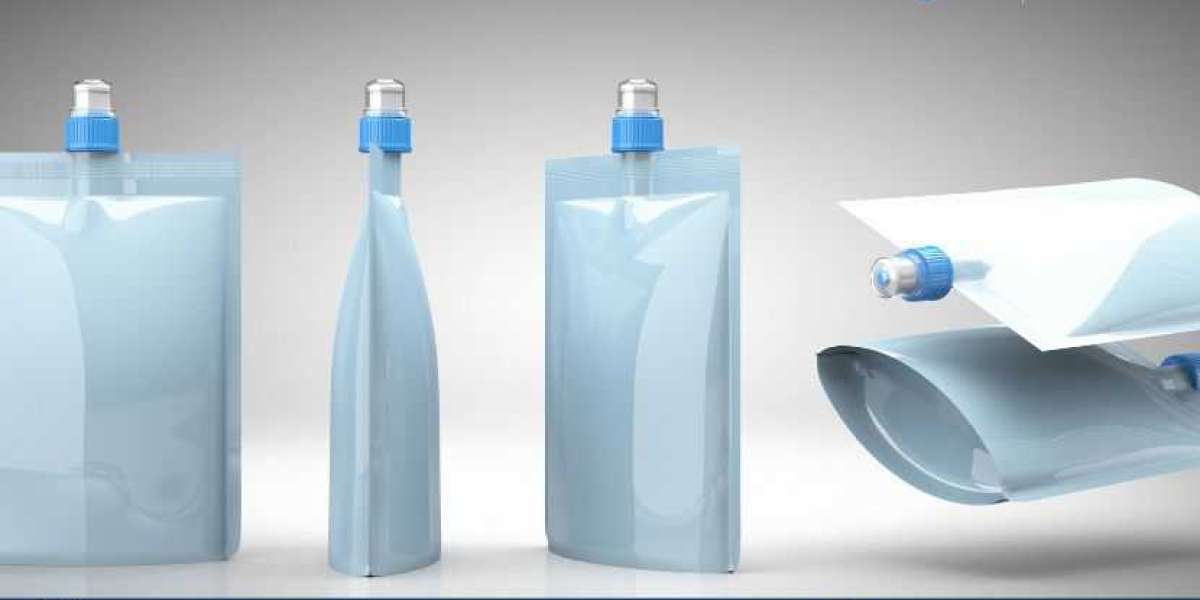The global flexible packaging market size is witnessing steady growth as industries seek lightweight, durable, and cost-effective packaging solutions. Flexible packaging provides enhanced product protection, extended shelf life, and reduced material usage, making it a preferred choice for food, pharmaceuticals, personal care, and industrial applications.
In 2024, the global flexible packaging market was valued at USD 265.84 billion, and it is projected to grow at a CAGR of 4.8% between 2025 and 2034, reaching approximately USD 403.7 billion by 2034. The demand for sustainable packaging, increasing e-commerce activities, and innovations in material science are driving the expansion of the flexible packaging industry.
This blog explores the market dynamics, key drivers, challenges, trends, and future opportunities shaping the global flexible packaging industry.
Market Overview
Flexible packaging refers to packaging materials such as plastic, paper, aluminum foil, and biodegradable films that can be molded or shaped based on product requirements. These materials offer lightweight, resealable, and tamper-proof solutions, making them suitable for food packaging, medical products, cosmetics, and industrial goods.
Manufacturers are adopting biodegradable, recyclable, and compostable materials to meet the growing consumer demand for eco-friendly packaging. Advancements in digital printing, high-barrier films, and smart packaging are further enhancing the functionality and appeal of flexible packaging.
Key Market Drivers
Several factors are fueling the growth of the global flexible packaging market:
1. Rising Demand for Lightweight and Sustainable Packaging
Industries are shifting toward lightweight packaging materials to reduce shipping costs, carbon footprint, and material waste. Flexible packaging uses less plastic and paper compared to traditional rigid packaging, making it a sustainable option.
2. Growth of E-Commerce and Online Retail
The expansion of e-commerce platforms and home delivery services is increasing the demand for protective, lightweight, and tamper-proof packaging solutions. Flexible packaging offers durability and space-saving benefits, making it ideal for online retail and logistics.
3. Increasing Consumer Preference for Convenience Packaging
Consumers prefer easy-to-open, resealable, and portable packaging for food, beverages, and personal care products. Stand-up pouches, zip-lock bags, and spouted pouches are becoming popular due to their user-friendly design and convenience.
4. Expansion of the Food and Beverage Industry
The food and beverage sector is a key consumer of flexible packaging. With the rising demand for ready-to-eat meals, frozen foods, and snack products, manufacturers are using high-barrier films and multilayer packaging to maintain product freshness and extend shelf life.
5. Growing Adoption of Biodegradable and Recyclable Packaging
Governments and consumers are pushing for eco-friendly packaging alternatives to reduce plastic waste. The demand for compostable films, bio-based plastics, and recyclable packaging materials is increasing as companies adopt sustainable packaging practices.
6. Innovations in Printing and Customization
Digital printing technology allows brands to offer personalized and interactive packaging solutions. Flexible packaging with QR codes, smart labels, and augmented reality features enhances consumer engagement and improves brand visibility.
Market Challenges
Despite its steady growth, the flexible packaging industry faces several challenges:
1. Environmental Concerns and Plastic Waste Regulations
Many flexible packaging materials contain non-recyclable plastics, contributing to global plastic waste pollution. Governments are imposing strict regulations on single-use plastics, encouraging manufacturers to develop sustainable packaging alternatives.
2. Fluctuating Raw Material Prices
The cost of plastic resins, aluminum foils, and biodegradable materials fluctuates due to supply chain disruptions, global trade policies, and raw material shortages. These price variations affect profit margins and production costs.
3. Limited Recycling Infrastructure for Flexible Packaging
Many flexible packaging materials, especially multi-layer films, are difficult to recycle. The lack of efficient recycling infrastructure and waste management systems creates challenges in achieving a circular economy for flexible packaging.
4. Competition from Rigid and Alternative Packaging Solutions
While flexible packaging is growing, it competes with rigid containers, glass bottles, and metal cans, which offer better structural integrity and premium appeal. Some industries still prefer rigid packaging for high-end or bulk products.
5. Consumer Perception of Flexible Packaging Quality
Some consumers perceive flexible packaging as less durable or lower in quality compared to rigid packaging. Brands must focus on educating consumers about the strength, efficiency, and benefits of flexible materials.
Key Market Trends
Several emerging trends are shaping the global flexible packaging industry:
1. Growth of Mono-Material and Recyclable Packaging
Manufacturers are shifting toward mono-material packaging, where all layers are made from the same recyclable polymer. This innovation improves recyclability and waste reduction, meeting regulatory requirements.
2. Expansion of Smart and Intelligent Packaging
Smart packaging solutions, including temperature-sensitive labels, RFID tags, and freshness indicators, are gaining traction. These technologies help consumers monitor product freshness, authenticity, and storage conditions.
3. Rising Demand for Plant-Based and Biodegradable Materials
Brands are adopting compostable films, paper-based pouches, and bio-plastics to reduce environmental impact. Plant-based materials derived from corn starch, sugarcane, and seaweed are replacing traditional plastics.
4. Increased Adoption of Stand-Up Pouches and Flexible Pouch Packaging
Stand-up pouches are gaining popularity due to their lightweight structure, resealability, and minimal material usage. These pouches offer improved shelf appeal and convenient storage, making them a preferred packaging choice.
5. Digital Printing and Personalization in Packaging
Digital printing technology allows for customized and limited-edition packaging designs. Brands are offering QR-coded packaging, interactive graphics, and personalized prints to enhance consumer engagement.
6. Rise of Circular Economy and Closed-Loop Packaging Systems
Companies are adopting closed-loop recycling systems, where used packaging materials are collected and reprocessed into new packaging. This approach reduces landfill waste and conserves resources.
Market Segmentation
The global flexible packaging market is segmented based on material type, packaging type, application, and region.
1. By Material Type
- Plastic (Polyethylene, Polypropylene, PET) – Used in food, beverage, and pharmaceutical packaging.
- Paper Paperboard – Preferred for eco-friendly and biodegradable packaging solutions.
- Aluminum Foil – Used in flexible food packaging and heat-resistant applications.
- Biodegradable Compostable Films – Emerging materials for sustainable packaging.
2. By Packaging Type
- Pouches Bags – Stand-up pouches, zip-lock bags, and spouted pouches.
- Wraps Films – Cling wraps, barrier films, and multilayer laminates.
- Sachets Stick Packs – Single-use packaging for food, pharmaceuticals, and personal care.
3. By Application
- Food Beverages – Snacks, frozen food, dairy, and ready-to-eat meals.
- Pharmaceuticals – Medicine pouches, blister packs, and medical device packaging.
- Personal Care Cosmetics – Flexible tubes and sachets for beauty products.
- Industrial Household Goods – Detergents, cleaning products, and hardware items.
4. By Region
- North America – High adoption of biodegradable and smart packaging solutions.
- Europe – Strong regulations promoting recyclable and plastic-free packaging.
- Asia-Pacific – Fastest-growing market due to e-commerce and food industry expansion.
- Middle East Latin America – Increasing investment in sustainable packaging technologies.
Future Outlook (2025-2034)
The flexible packaging industry will continue evolving with sustainable innovations, smart packaging technologies, and regulatory compliance. Key developments expected in the coming years include:
- Greater investment in biodegradable and compostable packaging solutions.
- Expansion of AI-powered and intelligent packaging applications.
- Wider adoption of digital printing and customizable packaging designs.
- Development of high-barrier and multi-functional flexible films.
With growing consumer demand for eco-friendly, lightweight, and smart packaging solutions, the global flexible packaging market is set to expand significantly, transforming the packaging landscape worldwide.








